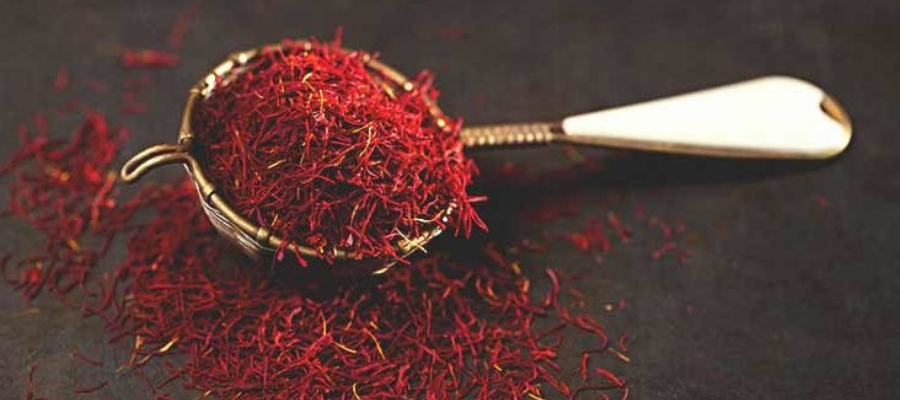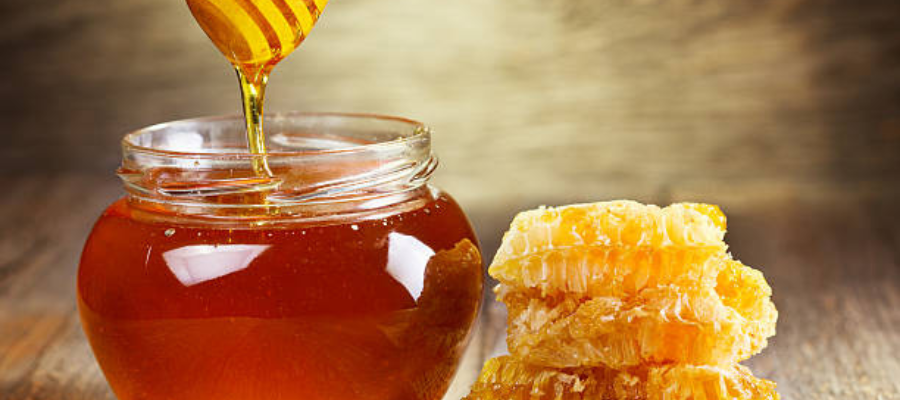Saffron
Publish Date: 17-Oct-2023 01:01:00
By : Sunjoy K Singh
It is believed that saffron originated in Iran however most of Mesopotamia and Egypt have been also suggested as the possible origin of saffron. Since its discovery saffron is being used for its medicinal properties as it was used for dyeing and as a perfume for body washes. It is especially used in spiritual rituals and is offered to divinities. Persian use saffron as a drugging agent and aphrodisiac even Alexander the Great uses Persian saffron in rice and as a medicine on the battlegrounds to cure the wounds of the soldiers. It is said that the Alexander troops took the saffron bathing to Greece by imitating the Persians. The sanctity of this color is very high in Hindu mythology and Buddhism who always wear saffron-colored robes, this practice is continued, even in modern times where the Hindu sadhus and the monks used to wear saffron-clad clothes although these colors are not dyed with saffron but are dyed with turmeric which is less expensive than Saffron. It is believed that saffron came to China with invaders from Persia. But as per the belief, it is said that the Kashmiri Saffron has come to China as many Chinese travelers visited Kashmir, where it was grown to offer it to Buddha. In Egypt Cleopatra, used saffron in her bath to achieve maximum pleasure in lovemaking. Egyptians also used saffron for its medicinal properties for curing many gastrointestinal diseases and fabric dyeing.
As par AYURVEDA, it is used to cure Kafa, Pitta, and Vata of each season and works as a balancing to all energy of the human system and helps in detoxifying and flushing out toxins from the body. It works for nutrient assimilation and the formation of new tissues. it should be used regularly in winter weather and can be added to sweets and meals, nowadays people are using this in pudding, Rice, and different types of Vegetarian or non-vegetarian items to increase the color and taste of the dishes
It is believed that saffron has been introduced in Kashmir by Central Asian immigrants in the first or second century BC, it is deeply associated with all Kashmiri cuisines, which represents the rich cultural heritage of Kashmir. The Kashmiri saffron is longer and has thicker stigmas, it is of deep red color excellent aroma, and rich flavor which is how it is different from the other saffron varieties available in the world. It is known worldwide as a spice, is used for whitening the skin and the health of human beings, and is most commonly used for medicinal purposes and cosmetics. In the Indian context, it is known as a superfood and it is being compared to gold rather it is more expensive than gold. It is very useful for asthma patients if they take it with milk, it is also used for treating respiratory infections low vitality, and weak lungs it is used to treat depression also. It is very excellent for skin problems it should be used with milk as it helps in the removal of toxins from the body.
Saffron is the most of all exotic spice in history and is famous for its perfume, dyeing, and medicinal properties. It is said that each flower produces only three stems these must be carefully handpicked, for one gram of saffron about 160 followers are used. In ancient India and in Ayurveda saffron or Kesar is being used for its strongest medicinal properties on the blood, the heart, and the reproductive system, it has invigorating qualities, and it is mostly used to increase the hemoglobin level and for angina and heart congestion it is also used for gynecological problems for delaying menstruation, it is used to cure the nervous and reproductive deficiencies and it helps in controlling degenerative tissues, impotency and low libido. It is used to cure depression. Western countries are also agreed with Ayurvedic teaching and clinical studies that saffron is very useful for depression. One to five straws per day is enough to take the benefit after soaking it in warm milk. The saffron should not be boiled because it loses its delicious volatile oil due to the boiling process.
It has a very beautiful color, especially in the Indian context this colour represents the symbol of Hinduism. Saffron is also called red gold it is about 3500 years old and in ancient times it is used by Romans and Egyptians for its medicinal properties. It is probably predominantly cultivated in Spain Iran and Kashmir in India. Kashmir, Karnataka, and Himachal Pradesh are considered for their cultivation. Saffron is a natural spice and it is the replacement for synthetic food. It is used for perfumeries and fabric dyes in India and China. It is high in antitoxic and has high intoxicant features even it helps in killing cancer cells and even in diabetes. There are four major counties Iran India Spain and Greece which are producing approximately 92% of the overall production of saffron. As per Ayurveda, it is used to glow on the skin, can cleanse and disinfect wounds, and is excellent for nourishing. It is excellent for the reproductive system and respiratory systems, it helps to treat black circles and pigmentations on the skin and acne, wrinkle, and dark spots.
Saffron is being produced in Iran, China, Greece, India, Italy, Turkey, France, Pakistan, Japan, and Australia in these countries this spice is cultivated and exported. India roughly produces 5% of the world’s total production. In India, 90% of the Saffron is cultivated in Kashmir and about 10% nowadays is being cultivated in Uttarakhand, Arunachala Pradesh, Sikkim, Manipur, and Assam. In 2021 the market size was about 410 million U.S. dollars and its compound annual growth is expected to be around 8%. Growing demand for Saffron for cosmetic applications and in medicine is a key driving factor for his market forecast. Nowadays adulteration has also been going on in Saffron due to its high price and increased demand.
Saffron works on the skin's dark spots and protects against ultraviolet agents. Since ancient times, it is used in food for culinary and perfumery value, it also works as a natural pigment in cosmetics. Saffron has been considered a panacea in Arabic, Greek, Egyptian, Mongolian, Chinese and Indian medicines. It is a great antidepressant it works for treating sexual dysfunction and is one of the most effective antioxidants, it is also useful in asthma and works for the digestive system, and has anti-inflammatory and analgesic effects, it also helped to control cholesterol levels. It is also useful in cataracts and sore eyes, it also helps during second-degree burns. The medicinal properties of saffron is being used for hundreds of years in culinary successfully and for dying purposes.
Nowadays adulteration in saffron has also started in which substances like beetroot farming grade fibers and red dye silk fibers are used other methods are using saffron fibers with honey or vegetable to increase their weight. The value of saffron is high because of labor-intensive harvesting methods. High-grade Kashmiri saffron is often sold and mixed with cheap Iranian imports these are then labeled as pure Kashmiri saffron due to which Kashmiri growers are suffering, adulterated saffron is mixed with the coloring extract of gardenia fruits. Almost all the saffron grows in a belt that starts from Kashmir in the East and west of Spain, Iran alone is responsible for the global 90 to 93% production and exporter of Saffron. In the 21st century Afghanistan, Greece, Morocco, and India have increased their production, and in Italy also it is produced in their southern part. It is also produced in Switzerland, Germany, Austria, Canada, China, Egypt, England, France, Israel, Mexico, and New Zealand, Susan Greece has also started the export of saffron to the United States, and it is producing saffron from the last three to four centuries
Saffron is used for dying fabric in perfumery and in religious and cultural ceremonies, especially in India. It is also used on a large scale in confectionery items and liquids, especially in Persia, India, Europe, and the Arab. Saffron spice will lose its flavor within six months if it is not stored in an air-tight cool and dark place, freezer can maintain the flavor of the saffron for up to two years if stored properly. In Hindu mythology, saffron is the color of Agni (Fire), symbolizing strength, courage, sacrifice, and the quest for salvation.
Socila Shaing:
Recently Published Blogs

By : Sunjoy K Singh
It is believed that saffron origi....

By : Sunjoy K Singh
Honey is man's first oldest, ....

By : Sunjoy K Singh
Do you know that by the age of 18....

